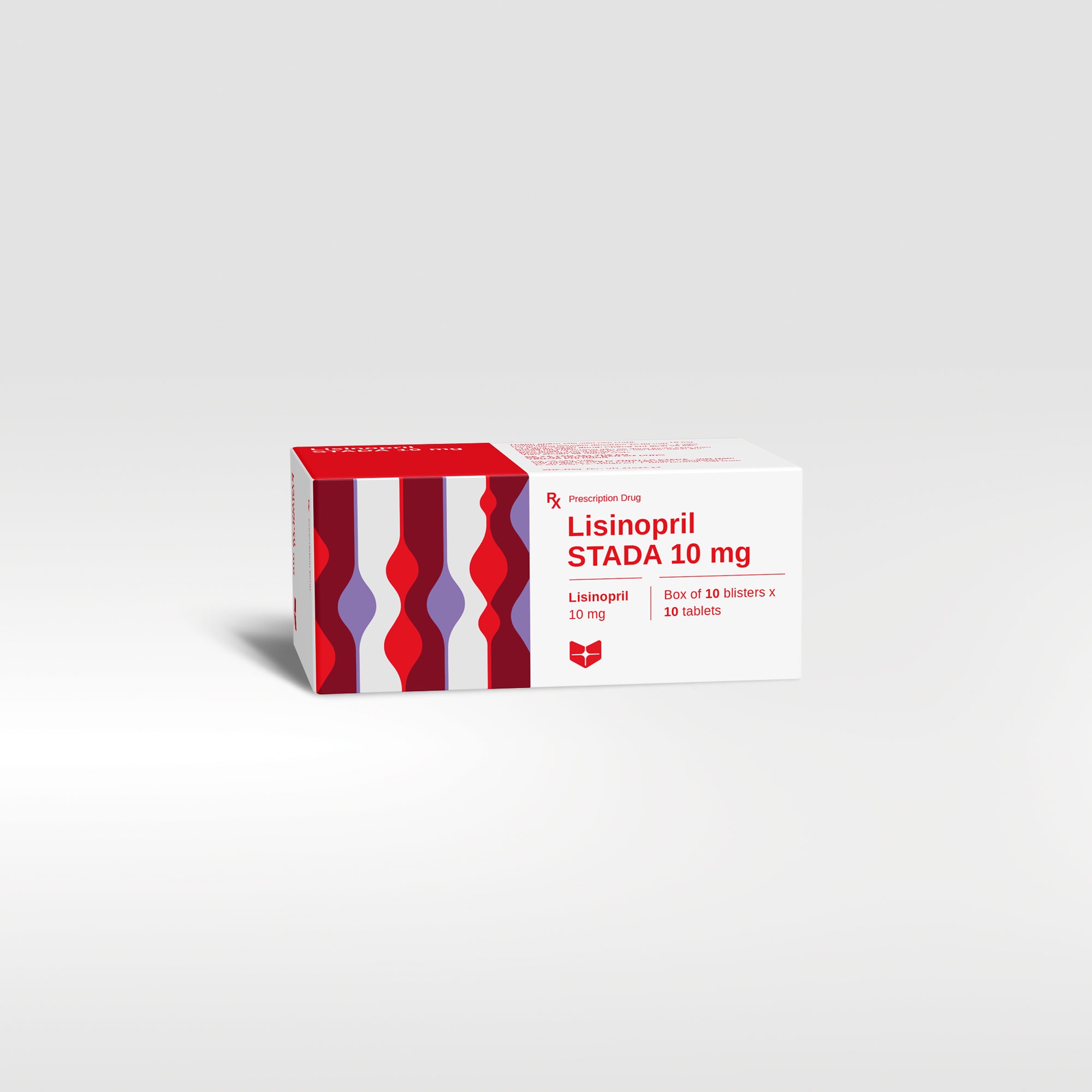Indications:
- Monotherapy or in combination to treat: Hypertension, symptomatic congestive heart failure resistant to or inadequately controlled by cardiac glycosides and diuretics, acute myocardial infarction who are hemodynamically stable (in conjunction with thrombolytic agents, aspirin, and/or β-adrenergic blocking agents).
- Diabetic nephropathy.
Dosage:
Adults:
- Hypertension: In adults not receiving a diuretic: 5–10 mg once daily, maintenance with dose of 20–40 mg daily, given as a single dose. In a patient already receiving a diuretic: discontinue diuretic therapy 2–3 days before initiating Lisinopril STELLA 10 mg (If diuretic therapy cannot be discontinued: 5 mg daily, sodium intake can be increased prior to initiating Lisinopril STELLA 10 mg).
- Congestive heart failure: 2.5–5 mg daily, the effective dosage of lisinopril in adults is 5–40 mg daily, given as a single dose.
- Acute myocardial infarction: A 5 mg dose of lisinopril should be given within 24 hours of onset of symptoms of myocardial infarction followed by a 5 and 10 mg dose 24 and 48 hours later, respectively. Maintenance with dose of 10 mg daily; continue for 6 weeks.
- Diabetic nephropathy: The initial dose is 2.5 mg once daily. In normotensive type 1 diabetics the maintenance dose is 10 mg daily, increased to 20 mg daily if necessary to achieve a sitting diastolic blood pressure below 75 mmHg. In hypertensive type 2 diabetics, the dose should be adjusted to achieve a sitting diastolic blood pressure below 90 mmHg.
Children aged 6 to 12 years: 70 mcg/kg (up to 5 mg) once daily, increase at intervals of 1 to 2 weeks to a maximum of 600 mcg/kg or 40 mg once daily. Children between 12 and 18 years of age: 2.5 mg daily, increase as necessary to a maximum of 40 mg daily.
In adults with renal impairment: creatinine clearance (Clcr) 31 to 80 ml/minute: 5 to 10 mg once daily. Clcr 10 to 30 ml/minute: 2.5 to 5 mg once daily. Clcr less than 10 ml/minute or on dialysis: 2.5 mg once daily. Lisinopril should not be given to children with a glomerular filtration rate of less than 30 ml/min/1.73 m2.
Usage:
Lisinopril STELLA 10 mg is administered orally.











